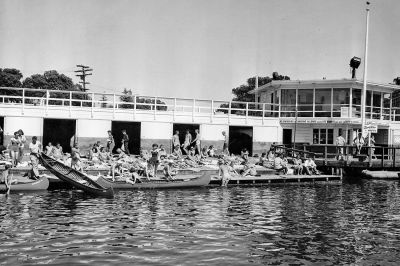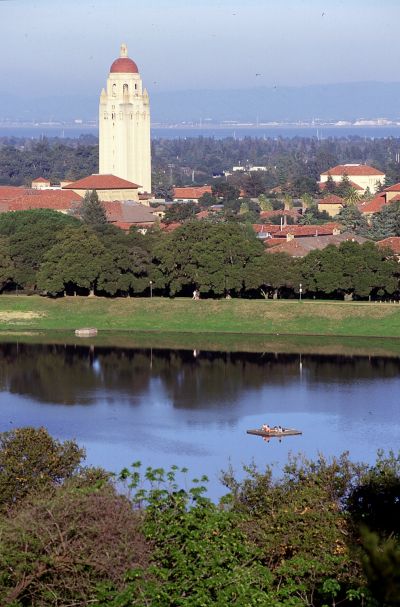Usually by this time of year, Lake Lagunita, the mostly dry lake behind Roble Hall, is filled with at least a little water. But the lack of winter rains this year has left the lake bed and popular walking area dry, with little chance of substantial rainfall in sight.
Lake Lagunita was created in the late 1800s as a reservoir to provide irrigation for the orchards and alfalfa fields of the Palo Alto Stock Farm. For many years, it was maintained for recreational use by members of the campus community. Today, it serves as a flood control facility and as a habitat for the endangered California tiger salamander.
“Lake Lagunita was a part of the Stanford landscape even before the university was founded,” reads a 2010 Stanford magazine article. “From the Pioneer Class to the present day, Lake Lag has always been a focal point of student life. In its heyday, the lake hosted cherished campus traditions such as the Water Carnival (starting in the 1900s and later revived as Hydro/Aqua Follies) and the Big Game bonfire. Now dry most of the time, and never full, its shores continue to provide a venue for recreation, relaxation and reflection – not to mention a backdrop for countless romances.”
With nostalgia in mind, we offer this slideshow from the Stanford News Service archives of when Lake Lagunita had water.

Image credit: Courtesy Stanford University Archives

Image credit: Courtesy Stanford University Archives

Image credit: Courtesy Stanford News Service

Image credit: Courtesy Stanford News Service

Image credit: Courtesy Stanford News Service

Image credit: Chuck Painter

Image credit: Chuck Painter

Image credit: L.A. Cicero

Image credit: L.A. Cicero

Image credit: L.A. Cicero

Image credit: L.A. Cicero

Image credit: Kate Chesley

Image credit: L.A. Cicero

Image credit: Aaron Kehoe

Image credit: Tamer Shabani